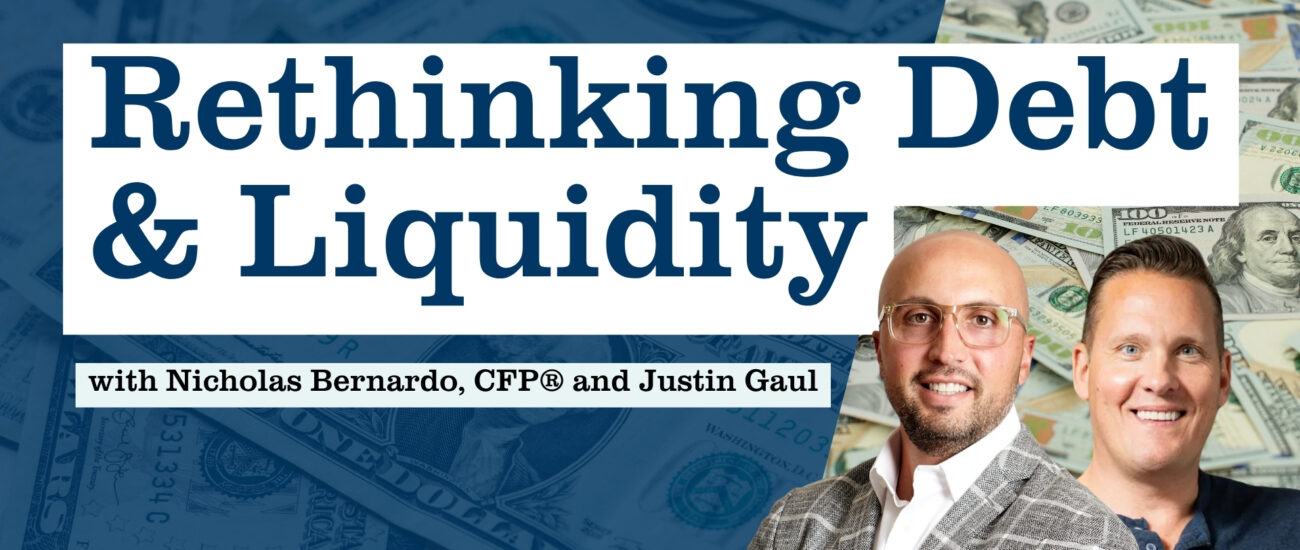Some of the most valuable planning conversations start with a simple question: What if?
We recently sat down with real estate entrepreneur Justin Gaul and explored how perspectives on debt and liquidity evolve as your financial strategy evolves. What followed was a real-world look at why building access to capital might matter more than you think.
Here’s a quick look at a few of the topics we discussed.
Why Don’t More People Better Leverage Lines of Credit?
It’s more of an education gap than anything else. People just don’t know what they don’t know.
Most people think of debt as something to avoid, but for those with assets, especially real estate or a stock portfolio, not having access to liquidity can be far more limiting.
In Justin’s experience, he shared how a line of credit helped his mom move closer to family and support her grandchildren. If you’ve been in your home for a few years, chances are you have built up equity. A home equity line of credit (HELOC) or portfolio access line (PAL) doesn’t mean you have to use it. It just means you can.
These tools can act like a financial safety net:
- Unexpected health event?
- Once-in-a-decade opportunity?
- Time-sensitive investment?
You can act without scrambling when you already have liquidity tools in place.
Liquidity Doesn’t Mean Piles of Cash
You end up with too much cash in an account that should be invested. There’s a misconception that financial safety requires stockpiling cash, but cash sitting in an investment account is idle capital.
Instead, planning around liquidity means:
- Keeping enough liquid for true emergencies
- Using flexible tools like HELOCs and PALs
- Avoiding the pressure to sell long-term investments at the wrong time
If the right deal or investment arises, you’re not forced to wait five years to save the money or liquidate your portfolio in a downturn. You already have access. It’s like having a built-in insurance policy that lets you say yes to the right moment.
Why Financial Literacy Matters at Every Level
There are people who’ve never written a check but are carrying six figures in student debt.
A big part of this conversation was about financial literacy. It’s not just for beginners. Even high earners can be uninformed about how money and debt actually work.
That lack of knowledge often leads to being over-leveraged in the wrong ways, or under-prepared to act when needed. Strategy matters more than timing, and that strategy starts with understanding your options.
Don’t Wait Until You’re Scrambling
You don’t want to be raising cash in 48 hours, taking out hard money loans at 14%. Good planning means setting things up before you need them. That way, you’re not forced into bad decisions in moments of urgency.
- Get your lines of credit in place early
- Maintain them at minimal cost
- Use them when they make strategic sense
Smart access to capital creates frictionless transactions when life or opportunity shows up.
Flip the Perspective
Some of the best deals you’ve probably done were from distressed sellers. If you’ve ever benefited from someone else’s poor planning, flip the script. Don’t be the distressed seller. Have liquidity. Build optionality. Avoid being forced to sell at the wrong time.
Final Thought
Liquidity planning ultimately is about building a strategic buffer between your portfolio and your real life. At the very least, know your options. The time to plan is before you need to act.
If this topic raises a few questions for your own planning, don’t ignore them. We welcome the conversation.
